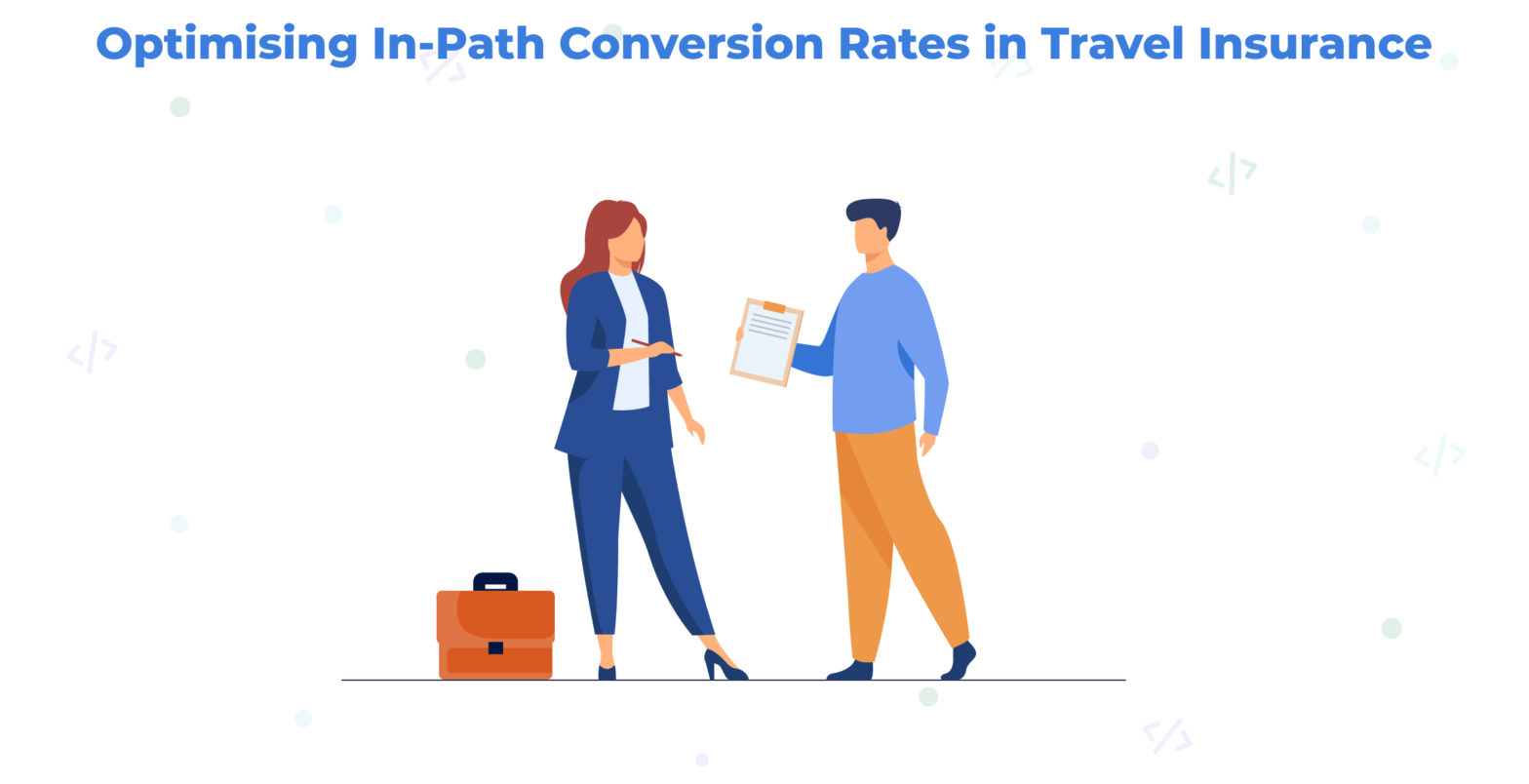
Amid a gradual industry-wide push to serve customers’ diverse needs and provide access to interconnected solutions, travel insurance is no longer largely offered as a separate, complementary, or mere add-on offer to a core product that’s already been purchased.
In the industry’s shift from siloed offerings to ecosystem solutions, in-path travel insurance – also known as embedded insurance or integrated path – offers the convenience and customer centricity that surpass those offered by white label or advertisement pop-up.
Get these up-to-date data and expert insights from Ancileo’s 2022 World Travel Insurance Benchmark for Airlines, a global study on 150+ airlines’ travel insurance programs and shifts in global travel insurers’ dominance in the market.
This report explores the growth of travel insurance partnerships in the airlines ecosystem, lending important insight into what lies ahead for the industry in 2022 and beyond.
Contact us to get free, full access to the complete research deck.
In-path sales follow a clear growth path in 2022, as powered by embedded insurance partnerships for travel insurance along with a range of other driving factors.
Of 114 airlines benchmarked in 2022, 73.1% offered in-path travel insurance. This meant 37 more airlines integrated in-path sales this year from 2021 levels of 77 airlines.
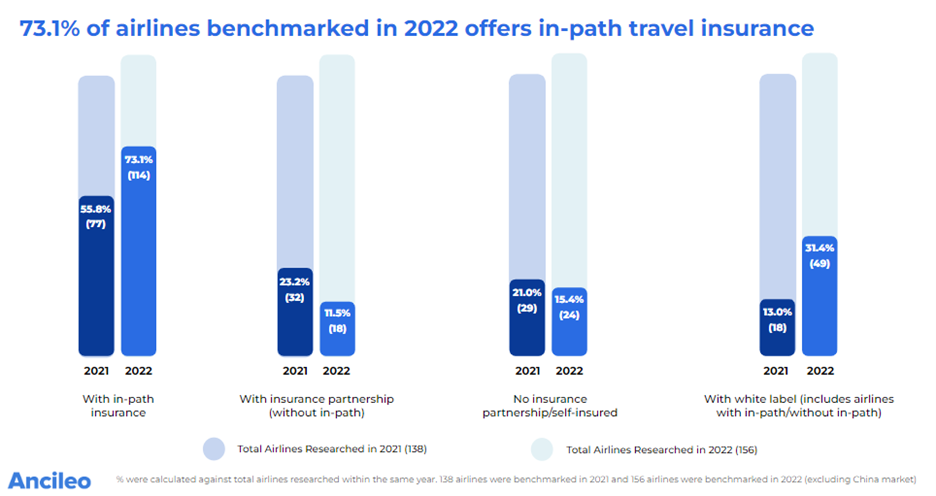
Notably, 18 airlines maintained insurance partnership without an in-path offer, a decrease from 2021 levels of 32 airlines. An increase from 2021 levels (18 airlines) can also be seen in 49 airlines in 2022 opting for white label or dedicated sites for selling travel insurance, whether they have a separate in-path or not.

Asia and Europe have the highest number of airlines with in-path insurance.
The former had 9 new airlines adding in-path in 2022 (30 airlines in total) from the previous year, while the latter had 18 more airlines offer insurance in path from already high numbers in 2021 (28 or 77.8%) leading up to 2022 (46 or 92.0%).
Here are five things that contribute to the success of in-path travel insurance, where airlines and other travel players can incentivise “opting in” for insurance purchase.
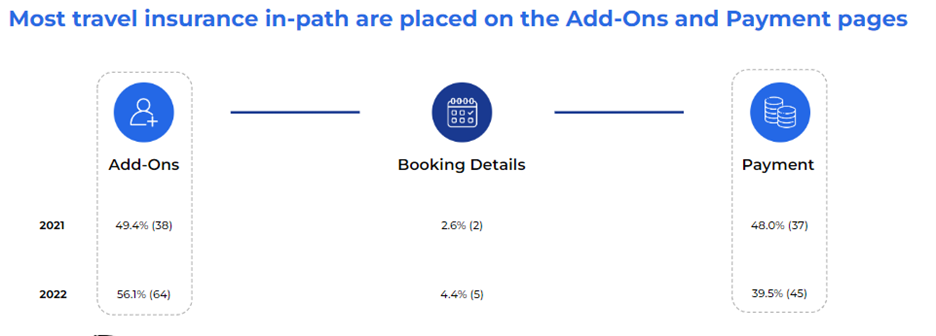
According to Olivier Michel, CEO and Founder of Ancileo: “To be consistent (or limited by their tech), airlines tend to add travel insurance in their ancillary add-on section, where it is mixed with numbers of other ancillary services.”
This, however, is a mistake: placing the travel insurance integration on the Payment page actually drives the highest conversion.
Most airlines, too, offer just 1 plan for in-path integration. While it makes sense not to confuse travellers with multiple offers, offering 2 plans with substantial benefits and pricing differences actually bodes well for conversion.
“For example, you could offer a comprehensive travel insurance (avg premium USD50) and simple cancellation product (avg premium USD15),” he noted.
Insurers take into account several different factors to determine pricing. These factors include trip cost, trip length, age, as well as destination.
Experts recommend the following pricing strategies:
For Michael Grossman, AVP, A&H – Travel Insurance at Starr, it couldn’t be simpler: Offer a simple, low-cost product so the price does not become a purchase deterrent.
“If the traveller does not opt in for the insurance in the purchase path, an email can be pushed out as a second opportunity for them to purchase the insurance. In both cases highlight the ability to cancel the policy with a full refund within a specific time frame,” Grossman said.

CEB Piso Protect is a new product that Philippine airline Cebu Pacific started offering in April 2022. It is available for purchase for both passengers and non-passengers through the following channels:
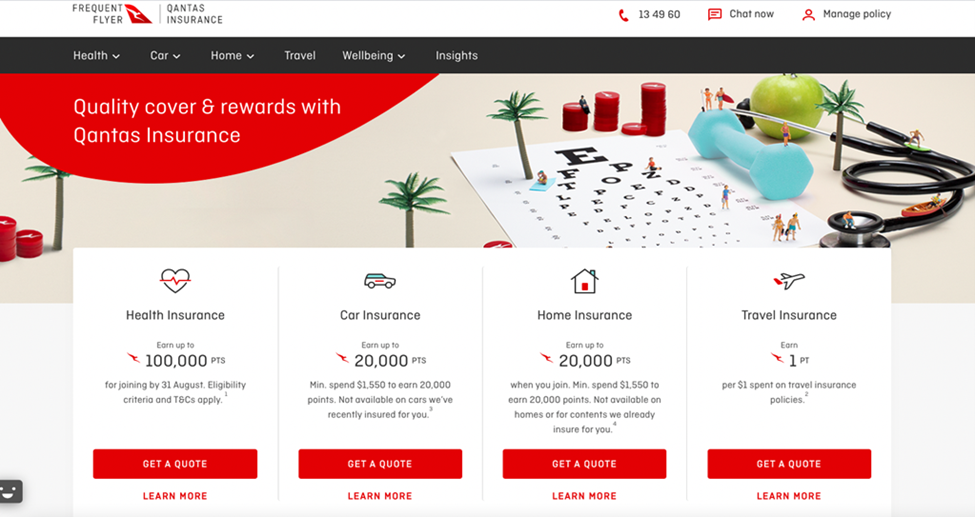
Qantas Insurance also built a full suite of insurance ecosystem beyond selling travel insurance, incorporating health, life, car, and home insurance.
These offers are integrated with its Frequent Flyer program, allowing for offset of purchases using miles.
Personalising based on individual travel needs continues to incentivise in-path purchase for customers. This means coverages that are customised based on demographics and travel patterns can enhance the embedded travel insurance offering.
This entails information exchange between airlines and insurers, including travel destinations, age, travel cost, advance purchase in days or months, as well as average number of people per transaction.
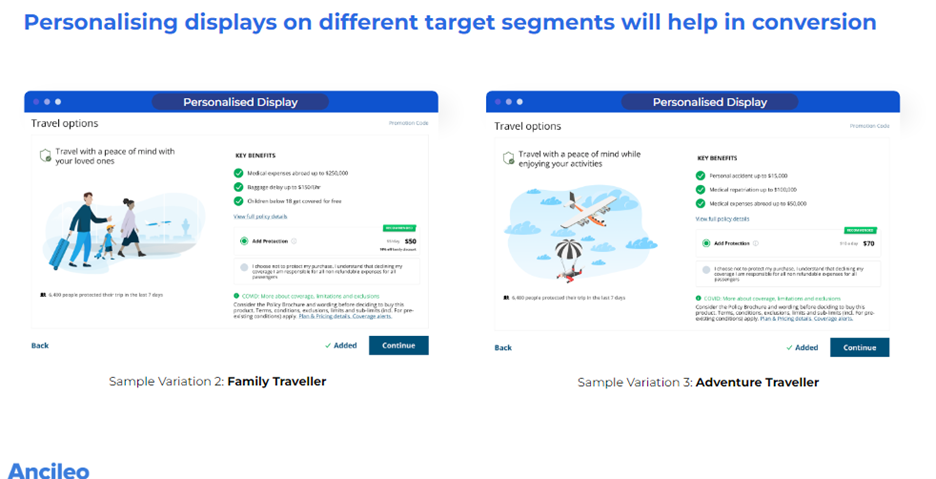
The end goal is to keep plans simple and easy to understand, and to eliminate unnecessary coverages.
This is hardly a one-off endeavor; continue A/B testing and revisit relevant data real-time to check the relevance of the insurance offering.
Airlines and other travel players are well-placed to analyse a range of factors involved in the partnership, including price, project deployment timeline, technology (e.g., customer claims platform), marketing efforts, and the product’s conversion rates.
They should also conduct monthly review and reporting as well as tracking of customer feedback.
Bangkok Airways conducts monthly meetings with its travel insurance partners to bounce off ideas, such as what to offer seasonally and how to improve the in-path display.
For Volaris, it is important to stay attuned to market trends.
“We also evaluate the travel insurance benefits to make improvements in case it is needed, for example the pikes of the pandemic,” said Daniela Avila Del Abrego, Ancillary Product Management Leader. “We also seek to have a competitive price to generate a good profit, and value teamwork to offer the best product possible that works for both parties.”
Get these up-to-date data and expert insights from Ancileo’s 2022 World Travel Insurance Benchmark for Airlines, a global study on 150+ airlines’ travel insurance programs and shifts in global travel insurers’ dominance in the market.
This report explores the growth of travel insurance partnerships in the airlines ecosystem, lending important insight into what lies ahead for the industry in 2022 and beyond.
Contact us to get free, full access to the complete research deck.